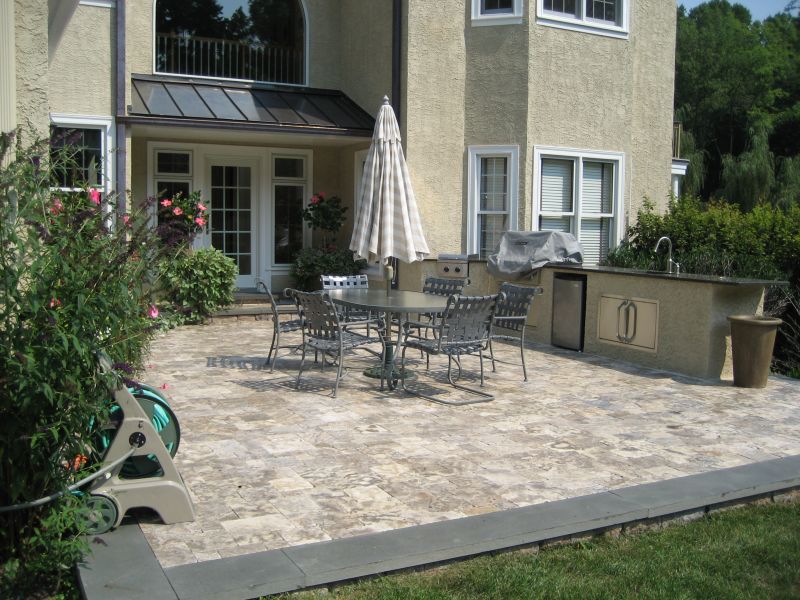What do you put under pavers so they don’t move? When installing natural stone pavers, what you put underneath them is just as important as the pavers themselves. A solid foundation keeps your patio, walkway, or driveway from shifting, sinking, or becoming uneven over time. If you’re wondering what goes under pavers to keep them in place, here’s everything you need to know.
1. Start with a Solid Excavation
Before anything is laid down, the area needs to be properly excavated. The depth of the excavation depends on what the space will be used for. For example:
-
Pedestrian paths: About 4–6 inches deep
-
Driveways or high-traffic areas: 8–12 inches deep
This ensures there’s enough room for the base layers and the pavers themselves.
2. The Base Layer: Crushed Stone or Gravel
This is the most important layer for stability. Use a compacted base of crushed stone or gravel (commonly called road base or Class II base rock). This layer provides drainage and helps distribute weight evenly.
-
Thickness: Typically 4–6 inches
-
Compaction: Use a plate compactor to compact the base in layers to avoid settling later.
3. The Bedding Layer: Washed Sand or Stone Dust
On top of the compacted base, a thin layer of bedding material helps level the pavers and hold them in place. The two common options are:
-
Washed concrete sand: Ideal for flexibility and drainage
-
Stone dust (for natural stone): Sometimes preferred when installing natural stone pavers for tighter joints and a more stable setting
-
Thickness: Around 1 inch
-
Tip: Avoid overcompacting this layer; it should be smooth but not too firm.
4. Natural Stone Pavers
Now comes the main event—laying your natural stone pavers. Fit them closely together, especially with irregular stone shapes, and check for level and alignment as you go.
5. Jointing Material
Once pavers are set, the gaps between them need to be filled to lock everything in place. For natural stone pavers, your options include:
-
Polymeric sand: Hardens with water to resist weeds and movement
-
Regular sand: Can be swept in but may need more frequent maintenance
-
Stone dust: Blends well with natural stone and helps lock joints tightly
6. Edge Restraints
Edge restraints are essential to prevent your pavers from shifting over time. These can be made from concrete, metal, or plastic and are installed along the perimeter of the paver area.
Final Thoughts – What do you put under pavers so they don’t move?
At our company, we believe great results start with great preparation. Choosing high-quality natural stone pavers is only part of the process—laying them over a properly built foundation ensures they stay beautiful and secure for years to come.
Need help selecting the right stone or guidance on installation? Contact us today—we’re happy to help you build something that lasts.

